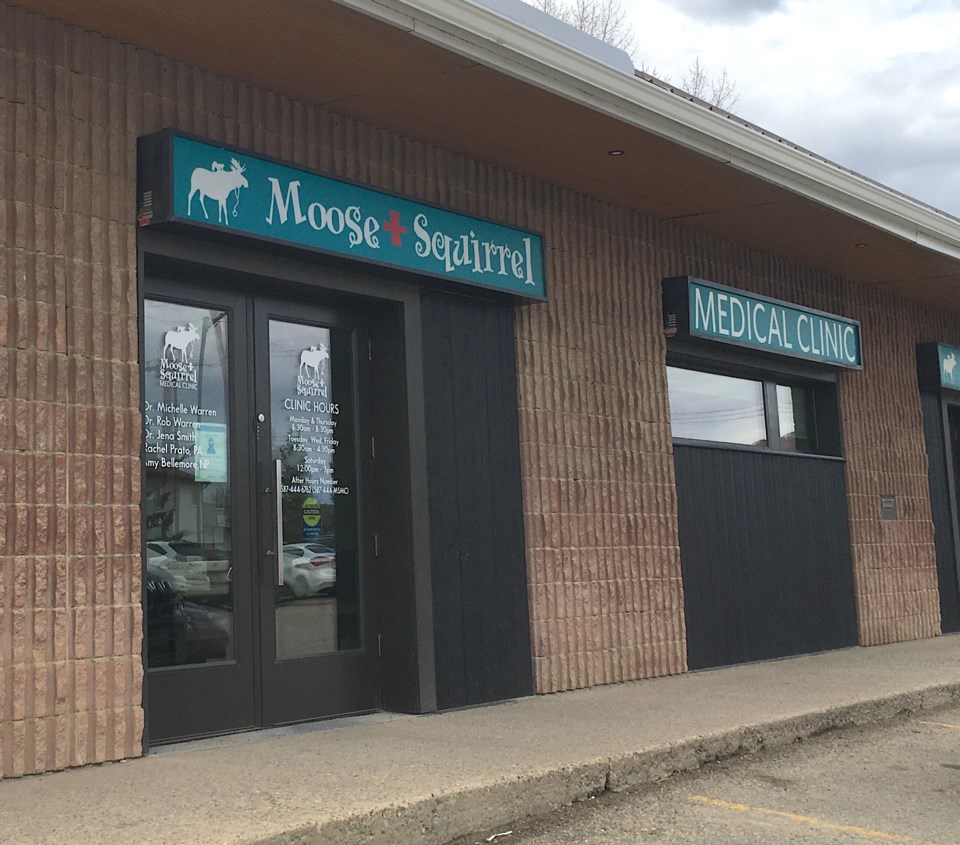SUNDRE — Despite the loss of some doctors compounded by pandemic-related complications over the past two-plus years, the Moose & Squirrel Medical Clinic has for the most part weathered the storm and isn’t going anywhere any time soon.
“It’s been an interesting last 12 months here,” said Dr. Rob Warren, who owns and operates the clinic with wife Dr. Michelle Warren, adding it’s been almost a year since the clinic lost five physicians.
“There’s another doctor who’s leaving town from the Greenwood (Family Physicians) clinic at end of May,” he said. “So, Sundre has — in the last 12 months — gone from 14 doctors, now it’ll be down to eight.”
That’s a trend he does not anticipate will be reversing any time soon.
“I’ve been in practice for 10 years. I’ve been in the physician recruitment business for 10 years. And we haven’t been able to recruit anybody new in the past three years, which is the longest stretch I’ve ever gone without being able to bring a new doctor to town,” he said.
“It’s really tough right now to ask new graduates to commit to joining a rural practice with so much uncertainty going on in Alberta.”
However, he added that recruitment and retention appears to be a country-wide issue that’s not confined to the province.
“These new grads have lots of options and it’s very hard for us to compete to bring new doctors into Sundre right now,” he said.
With that being said, Rob added they’ve endeavoured to “think outside the box” at the clinic.
“We knew that it was going to be a real challenge to replace five young doctors,” he said.
“So, we’ve changed the clinic over from the old fee-for-service model, which is what 98 per cent of doctors in Alberta practise under, to something called the Blended Capitation model, which is common in Ontario but not common in Alberta at all.”
According to the Alberta government website, the blended capitation model “compensates family doctors based on how many patients they have and the number of services provided” and offers physicians flexibility to deliver services in different ways that enables them to spend more time with each patient.
The fee-for-service approach is a payment model wherein either doctors, hospitals or medical practices charge separately for each service performed.
The new approach has “allowed us to hire a nurse practitioner and a physician assistant to help care for our patients,” said Rob.
Michelle added a couple of physicians have also joined the clinic on a long-term locum basis to lend a hand for a few months.
“But nobody wants to commit,” she said. “They’ve been really helpful as well, but just getting a physician who has decided to take on a panel of patients and make this their home base, that’s our goal.”
Furthermore, Rob added that when the five physicians left the clinic, there was a patient load of approximately 1,500 people out of a total of 3,400 who were on the precipice of no longer have a family doctor.
But that never ended up happening.
“We were able, because of this new model, to keep all of those patients at the clinic (and) ensure that they do have a family doctor with one of the three of us, and with our nurse practitioner and physician assistant helping care for them,” he said.
The clinic was in the end not only able to find a way to accommodate existing patients, but also take on many new ones.
“We’ve added another 1,000 patients to our practice in the last 12 months. We’re now up to 4,400 and we’re taking patients from as far away as Cochrane and Rocky Mountain House because of physician shortages everywhere and people in those communities were losing their family doctors,” he said.
“Because of the change to our practice model, we’re still continuing to provide care to our community and beyond.”



